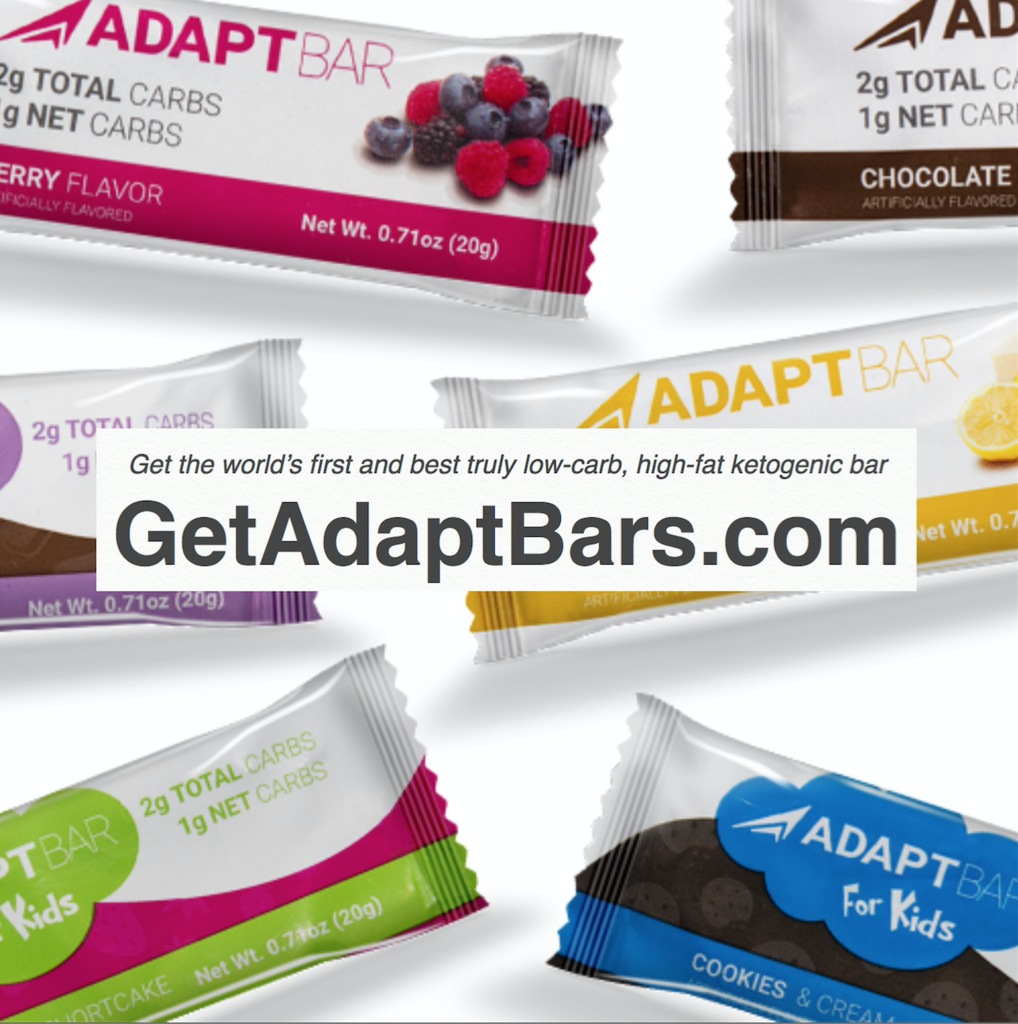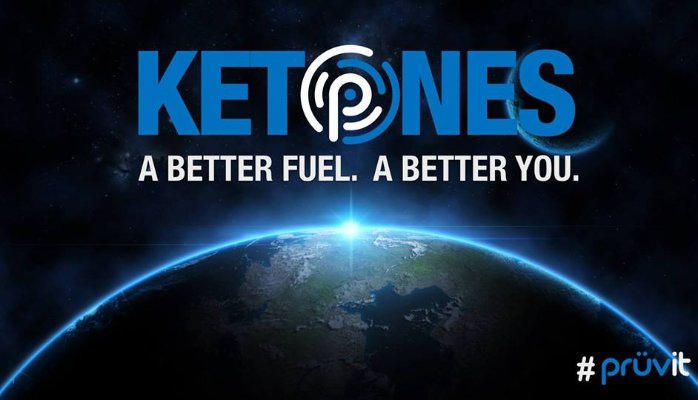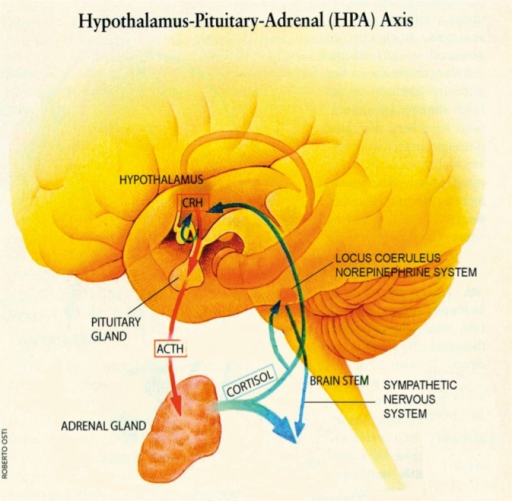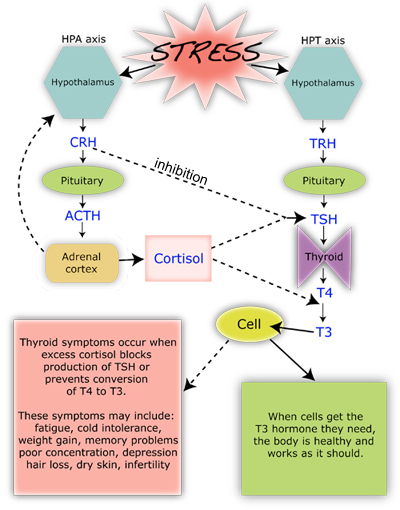Inability to lose weight is the most common reason people see me. It’s often a combination of small things of which they are unaware. What simple things are keeping the spare tire inflated around the your waist? I’ve listed the eight most common reasons you can’t lose the fat.
You Eat Too Many Carbohydrates
About 85% of the people that walk through my office doors have some degree of insulin resistance. This means that they produce 2-20 times the normal amount of insulin in response to ANY form of starch or carbohydrate. Insulin is the hormone responsible for letting glucose into the cell to be used as fuel. More importantly, it is the hormone responsible for dampering glucose production in the liver and, it is the primary hormone responsible for pushing triglycerides into the fat cells (essentially, the master hormone for making you FAT). The more insulin you make the more fat you store. Insulin resistance, the inability for insulin to signal glucose dampering at the liver receptors, is the first stage that starts 15-20 years before you become a diabetic.
 In order to lose fat, you have to decrease the insulin to a basal level. If you don’t the fat enters the fat cell faster than it exits and the fat cells get bigger. This is RULE number one to weight loss. You gotta turn down the high insulin surge that 85% of us are really good at producing. If you don’t do this, it is almost impossible for many of us to lose weight.
In order to lose fat, you have to decrease the insulin to a basal level. If you don’t the fat enters the fat cell faster than it exits and the fat cells get bigger. This is RULE number one to weight loss. You gotta turn down the high insulin surge that 85% of us are really good at producing. If you don’t do this, it is almost impossible for many of us to lose weight.
For at least 1/3rd of the people I see, this cannot be accomplished unless TOTAL CARBOHYDRATES are decreased to less than 20 grams per day. Yes, you read that correctly . . . Less that 20 grams per day.
- Your banana contains 30 grams of carbohydrate
- Your yogurt has up to 60 grams of carbohydrate
- That oatmeal you thought was good for you has up to 200 grams of carbohydrate
- The half and half you put in your coffee is half lactose (sugar from milk), 10 grams per cup.
You Eat Too Much Protein
Yes, protein can cause weight gain. And, no, it’s not because gluconeogenesis is on overdrive. There is always a body builder that sends me a nasty message after I say this. But the fact is that it’s true. (I’ll keep an eye on my e-mail).

Five of the ten essential amino acids stimulate an insulin response. Remember why carbohydrates cause weight gain . . . ? (I will give you a hint . . . INSULIN).
Certain amino acids that make up proteins can do the same thing. Arginine, Lycine, Phenylalanine, Leucine & Tyrosine, in that order, stimulate insulin enough to halt weight loss or increase weight gain in a significant way (1). We need protein to stay healthy, but too much of these amino acids in someone who is insulin resistant will inhibit weight loss and stimulate fat gain. I’ve also seen it raise small dense LDL particles in the cholesterol (the heart disease causing particle driven by insulin over production) I’ve seen this time and time again with many people. Simply modulating down the protein to the calculated needs lets the weight start coming off again.
So, what foods contain these in the highest amounts? Sea lion liver (I know, this won’t go over very well with the polar bears), soy protein isolate, crab, shrimp, sesame flour, turkey breast, pork loin (it’s the leanest cut of pork – No. BACON is fine), chicken, pumpkin seeds, soybeans, peanuts, spirulina (blue green alge that is found in the sea).
Yes, I get it. We’ve been told these were the healthy foods for the last 50 years. But, think about it. When did we start gaining weight as a country? 50 years ago.
Too much chicken, shrimp, crab and soy foods will inhibit weight loss in those with insulin resistance. So, consider whether it should be chicken you add to your salad. Consider, instead, bacon or beef as a wonderfully tasty substitute.
How much protein do you need? My formula for calculating your individual amount is here in my blog Calculating Protein Needs.
You Don’t Eat Enough Fat

To successfully lose fat on a ketogenic diet, 30-70% of your caloric intake should come from fat. Yes. You read that correctly. (The definition of a high fat diet is any diet containing more than 30% of fat from calories).
If we limit carbohydrates (which is currently 80% of the body’s fuel on the standard America plate), and moderate excessive protein which also halts weight loss, you have to replace the fuel. That fuel replacement should come from fat. Increasing fat will improve the sensation of fullness, provide all the fat soluble vitamins, and actually makes food taste good again.
As long as you are lowering the insulin to basal levels, you can actually eat all the fat for which you are hungry. Add bacon, butter, coconut oil, avocado, hard cheese, and oh, did I say bacon?
But Dr. Nally, what about all that saturated fat?
The saturated fat is only a problem with vascular disease, cholesterol and heart disease when the insulin level is also high at the same time. It’s the high insulin in the presence of large amounts of fat that drives the risk for atherosclerosis (vascular and heart disease). Instead of cutting out the fat, we’re cutting out the insulin.
How much fat should you be eating? Shoot for 60-70% of your calories from fat for the first 3 months. If your fat grams are slightly higher than or equal to your protein grams, you’re there. Listen to your body and eat fat until you’re full. That’s how most of my patients gauge their need and suppress hunger.
You’re Now Eating Too Much Fat
After the third month, most of us are fat adapted. You may notice your weight loss slows or halts. This means that our ability to absorb fat into the blood stream is dramatically more efficient. It also means that your taking in more fat into the fat cell then you are pulling out of the fat cell. I’ve found this to be the case with people who are loading butter, MCT or heavy whipping cream into their coffee. In this case, back off the “extra fat” your are loading or drinking. It’s not the calories in this case. There are 3-4 hormonal reasons this occurs once you are fat adapted. (We’ll talk about this in another blog post.)
You’re Drinking Tea
 I know, I know. Tea is a national pass time in Europe. And, it is deeply embedded in the culture of many other countries. I’m probably not winning any friends across the pond by saying this, and it may bring back memories of the Boston Tea Party. However, the problem is that leaf based teas stimulate a rise in insulin (not taxes). I have had many patients hit a weight loss plateau because of the use of tea, specifically black tea, oolong tea, and green tea (2,3,4).
I know, I know. Tea is a national pass time in Europe. And, it is deeply embedded in the culture of many other countries. I’m probably not winning any friends across the pond by saying this, and it may bring back memories of the Boston Tea Party. However, the problem is that leaf based teas stimulate a rise in insulin (not taxes). I have had many patients hit a weight loss plateau because of the use of tea, specifically black tea, oolong tea, and green tea (2,3,4).
Yes, I am well aware of the tremendous benefits of the epigallocatechin gallate (ECGC) found in green tea. ECGC, which can be isolated as an extract, improves insulin resistance and improves GLP-1 signaling. ECGC has, also, been show to improve triglycerides (5). For this reason, it is one of the components in the KetoEssentials Multi-Vitamin I developed a few years ago and recommend to all my patients.
It appears, however, that the theaflavin within the leaf of the tea may be playing the offending role in the insulin spike seen with their use (6).
You Don’t Get Enough Sleep
Lack of sleep has been implicated in difficulty with weight loss and weight gain (7). Lack of sleep places the body into a state of chronic stress. This elevates cortisol, lowers testosterone, increases insulin (there’s that insulin problem, again) and increases the other inflammatory hormones. This perfect storm of stress, driven by lack of restful sleep, plays a big role in fat loss.
My average patient needs at a minimum of 6-7 hours of restful sleep to maintain and lose weight.
This is where untreated sleep disorders like sleep apnea play a big role. If you have sleep apnea, get it treated. What else can you do to help improve sleep?
- Remove the computer, iPad and cell phones from the room.
- Lower the room temperature. Men sleep better around 68-70 degrees F and women sleep better when the temperature is <70 degrees F.
- Close the blinds or shades to add or darken the room.
- Don’t study or watch TV in the same room you sleep in. Your body gets used to doing certain activities in certain rooms of the house. The bedroom should be reserved for sleep.
- Go to bed at the same time
- Get up at the same time.
It may take your body and body’s biorhythm 3-4 weeks to adjust to changes you make around sleep habits. Be patient with yourself.
You’re Married to Stress
Just as lack of sleep is stressful, other forms of chronic stress also raise cortisol, insulin and the inflammatory hormones. Chronic stress also lowers testosterone. It, also, has the potential to lower neurosignaling hormones in the brain like serotonin and dopamine, putting you at greater risk for depression and anxiety.
Other forms of chronic stress can occur from poor relationships, chronic pain, stressful employment, unfulfilled expectations, chronic illness and all forms of abuse. If any of these are playing a role in your life, you need to address them, and address them now.
As a physician, my job is stressful. Dealing with life and death issues with multiple people through the day, six or seven days a week, takes it’s toll. I’ve found that weight lifting, horseback riding, and taking care of my animals are my outlets. Find something physical, that takes you outside in the elements and forces you to break a sweat for 15-20 minutes is the key.
 Our bodies have a “fight or flight system.” 100 years ago, the stress was fighting or running from the bear that squared off with you when you happened upon him in the woods. Cortisol, adrenaline, epinephrine, insulin, glucose, and inflammatory hormones pour into the blood stream. The heart beats faster, blood flows rapidly to the muscles, sensory awareness is heightened in the brain and increased oxygen flows to the lungs. This lets you fight the bear or run from the bear.
Our bodies have a “fight or flight system.” 100 years ago, the stress was fighting or running from the bear that squared off with you when you happened upon him in the woods. Cortisol, adrenaline, epinephrine, insulin, glucose, and inflammatory hormones pour into the blood stream. The heart beats faster, blood flows rapidly to the muscles, sensory awareness is heightened in the brain and increased oxygen flows to the lungs. This lets you fight the bear or run from the bear.
But, you can’t fight or run from your cynical boss. You can’t fight or run from oppressive finances, the person that cuts you off on your one hour commute in traffic, or your coworker who keeps pestering you. However, your body still releases adrenaline, cortisol, epinephrine, insulin and a number of inflammatory hormones prepping you to fight or run. If you don’t burn these hormones off, they halt weight loss, and actually can cause weight gain, increase anxiety and over time disrupt sleep.
So find your favorite way of physically relieving stress, and do it 2-3 times per week. (No, gentlemen, sex doesn’t count).
You Have An MTHFR Deficiency
In the last few years, we’ve been able to identify a number of genetic deficiencies that play a role in weight gain. One of those is an methyl-tetrahydrofolate enzyme deficiency (MTHFR deficiency for short). This is a genetic deficiency in the enzyme that converts adds a methyl ion to the folic acid in the cells of your body.
This is important, because if you can’t methylate folic acid inside the cell, you’ll have difficulty using vitamin B12 and B6 very efficiently to form methionine (a key amino acid in blood vessel and nerve function). There are two genes that encode for the enzyme that does the methylation of folic acid. Deficiency in one or both of these can lead to problems.
In severe cases, it causes homocysteine to build up to unsafe levels in the blood and slow the formation of methionine. It is associated with B12 deficiency, weight gain, fatigue, migraines, depression, anxiety, neuro-developmental disorders like autism, pregnancy loss, blood clots and neuropathy in pre-diabetic and diabetic patients (8, 9, 10).
Giving extra vitamin B12, B6 and folic acid (vitamin B9) doesn’t appear to help. Clinical evidence is pointing to the pre-methylated form of the folic acid. Finding this pre-methylated form has been difficult and notably expensive for patients. I found this deficiency to be so prevalent in my office, I added methylated folic acid to the KetoEssentials Multivitamin.
You Give “Couch Potato” A New Name
We have become a very sedentary people. We have engineered physical activity out of our lives. Remote controls, elevators, escalators, people movers, and automation have made our lives physically easier.
The average office worker burns 300 kcal per day sitting at a desk on a computer. The average farm worker burns 2600 kcal per day. That’s the equivalent of running a marathon every day.
Physical activity doesn’t necessarily cause weight loss. However, physical activity changes the hormones of the body including increasing a hormones like catacholamines, testosterone and a hormone called atrial naturitic peptide (ANP). ANP opens the fat cell, and lets more fat out (11).
When physical activity is paired with the correct diet, the weight come off. This is where exogenous ketones may play a role. The increased presence of ketones in the blood increases the release of ANP helping to activate triglyceride release from the fat cell.
Don’t get me wrong, many of my patients can lose weight with just dietary carbohydrate restriction alone, however, if you’ve hit a stall, you may need to look at your physical activity levels and many people like me, who are notably insulin resistant, benefit greatly with the addition of exogenous ketones.
Kickstart Ketosis over the Plateau
Is your fat loss on a plateau? Knowing that these challenges plague people on and off throughout the year, and, seeing people get hung up on these issues, I’ve created the Ketogenic Lifestyle 101 Course. This program gets you jump-started into ketosis and gives you the tools to overcome the individual hurtles you will experience on your health journey.
If your the really motivated type, and want a true 30 day challenge, then join my Kickstart program.
References:
- Floyd J et al., Stimulation of Insulin Secretion by Amino Acids, Journal of Clinical Investigation. 1966. 45(9).
- Bryans JA et al., Effect of black tea on post-prandial glucose and insulin. Journal Am Coll Nutrition 2007, 25(5): 471-7.
- Store KS & Baer DJ. Tea consumption may improve biomarkers of insulin sensitivity and risk factors for diabetes. The Journal of Nutrition. Aug 2008, 138(8): 1584S-1588S.
- Hosoda K et al., Anti-hyperglycemic effect of oolong tea on type II diabetes. Diabetes Care. Jun 2003. 26(6): 1714-1718.
- Chia-Yu Liu,Chien-Jung Huang, Lin-Huang Huang, I-Ju Chen, Jung-Peng Chiu, Chung-Hua Hsu. Effects of Green Tea Extract on Insulin Resistance and Glucagon-Like Peptide 1 in Patients with Type 2 Diabetes and Lipid Abnormalities: A Randomized, Double-Blinded, and Placebo-Controlled Trial. PLOS one(online). March 10, 2014.
- Cameron, Amy R.; Anton, Siobhan; Melville, Laura; Houston, Nicola P.; Dayal, Saurabh; McDougall, Gordon J.; Stewart, Derek; Rena, Graham (2008). “Black tea polyphenols mimic insulin/insulin-like growth factor-1 signalling to the longevity factor FOXO1a”. Aging Cell. 7(1): 69–77.
- Beccuti, Guglielmo, and Silvana Pannain. “Sleep and Obesity.” Current opinion in clinical nutrition and metabolic care 14.4 (2011): 402–412. PMC. Web. 18 Sept. 2017.
- Divyakolu S, Tejaswini Y, Thomas W, Thumoju S, et al. (2013) Evaluation of C677T Polymorphism of the Methylenetetrahydrofolate Reductase (MTHFR) Gene in various Neurological Disorders. J Neurol Disord 2:142. doi: 10.4172/2329-6895.1000142
- Gilbody, S., Lewis, S. & Lightfoot, T. (2007). Methylenetetrahydrofolate reductase (MTHFR) genetic polymorphisms and psychiatric disorders: A HuGE review. American Journal of Epidemiology, 165(1), 1-13.
- Menon, S., Lea, R., Roy, B., Hanna, M., Wee, S., Haupt, L., & … Griffiths, L. (2012). Genotypes of the MTHFR C677T and MTRR A66G genes act independently to reduce migraine disability in response to vitamin supplementation. Pharmacogenetics And Genomics, 22(10), 741-749.
- Lafontan M et al., Control of lipolysis by natriuretic peptides and cyclic GMP. Trends in Endocrinology and Metabolism. 19(4): 130-137.


















 In order to lose fat, you have to decrease the insulin to a basal level. If you don’t the fat enters the fat cell faster than it exits and the fat cells get bigger. This is RULE number one to weight loss. You gotta turn down the high insulin surge that 85% of us are really good at producing. If you don’t do this, it is almost impossible for many of us to lose weight.
In order to lose fat, you have to decrease the insulin to a basal level. If you don’t the fat enters the fat cell faster than it exits and the fat cells get bigger. This is RULE number one to weight loss. You gotta turn down the high insulin surge that 85% of us are really good at producing. If you don’t do this, it is almost impossible for many of us to lose weight.

 I know, I know. Tea is a national pass time in Europe. And, it is deeply embedded in the culture of many other countries. I’m probably not winning any friends across the pond by saying this, and it may bring back memories of the
I know, I know. Tea is a national pass time in Europe. And, it is deeply embedded in the culture of many other countries. I’m probably not winning any friends across the pond by saying this, and it may bring back memories of the  Our bodies have a “fight or flight system.” 100 years ago, the stress was fighting or running from the bear that squared off with you when you happened upon him in the woods. Cortisol, adrenaline, epinephrine, insulin, glucose, and inflammatory hormones pour into the blood stream. The heart beats faster, blood flows rapidly to the muscles, sensory awareness is heightened in the brain and increased oxygen flows to the lungs. This lets you fight the bear or run from the bear.
Our bodies have a “fight or flight system.” 100 years ago, the stress was fighting or running from the bear that squared off with you when you happened upon him in the woods. Cortisol, adrenaline, epinephrine, insulin, glucose, and inflammatory hormones pour into the blood stream. The heart beats faster, blood flows rapidly to the muscles, sensory awareness is heightened in the brain and increased oxygen flows to the lungs. This lets you fight the bear or run from the bear.







 That something else should be fat. Protein must be moderated, as it will also be stored as fat if you eat too much. So, if the carbohydrates are kept low, fat intake can be increased and the body will pick the fat it wants and essentially throw the rest out without raising cholesterol, causing weight gain or causing heart disease. This is why we want you to use good natural animal fats like butter, hard cheese, olive oil, coconut oil, avocado, etc. Look for fats highest in omega-3 fatty acids as these decrease inflammation and improved weight loss. Look for meats highest in fat like red meat (55% fat) and pork (45% fat). Take the food pyramid and flip it over.
That something else should be fat. Protein must be moderated, as it will also be stored as fat if you eat too much. So, if the carbohydrates are kept low, fat intake can be increased and the body will pick the fat it wants and essentially throw the rest out without raising cholesterol, causing weight gain or causing heart disease. This is why we want you to use good natural animal fats like butter, hard cheese, olive oil, coconut oil, avocado, etc. Look for fats highest in omega-3 fatty acids as these decrease inflammation and improved weight loss. Look for meats highest in fat like red meat (55% fat) and pork (45% fat). Take the food pyramid and flip it over.
 20% of women that I see in my practice who are over 55 years old, need some degree of estrogen replacement before they are able to lose weight. Estrogen plays a very large role in regulation of the metabolism and when deficient, causes weight retention or weight gain. Talk to your doctor about the risks and benefits of estrogen for you individually in this situation.
20% of women that I see in my practice who are over 55 years old, need some degree of estrogen replacement before they are able to lose weight. Estrogen plays a very large role in regulation of the metabolism and when deficient, causes weight retention or weight gain. Talk to your doctor about the risks and benefits of estrogen for you individually in this situation.








 People with significant stressors in their life have been show to have a raised cortisol secretion. Chronic stress induces hyperactivity of the hypothalamic-pituitary-adrenal axis causing an over production of cortisol and normalization of their cortisol levels occurs after resolution of the stressor. This cortisol response is not high enough to lead to a true
People with significant stressors in their life have been show to have a raised cortisol secretion. Chronic stress induces hyperactivity of the hypothalamic-pituitary-adrenal axis causing an over production of cortisol and normalization of their cortisol levels occurs after resolution of the stressor. This cortisol response is not high enough to lead to a true  Under a stress response, cortisol turns on gluconeogensis in the liver (the conversion of amino acids into glucose) for fuel. Cortisol, also, shifts the storage of fats into the deeper abdominal tissues and turns on the maturation process of adipocytes (fat cells). In the process, it suppresses the immune system to decrease inflammation during times of stress (7,8,9). In the short run, this is an important process, however, when cortisol production is chronically turned up, it leads to abnormal deposition of fat, increased risk of infection, impotence, abnormal blood sugars, head
Under a stress response, cortisol turns on gluconeogensis in the liver (the conversion of amino acids into glucose) for fuel. Cortisol, also, shifts the storage of fats into the deeper abdominal tissues and turns on the maturation process of adipocytes (fat cells). In the process, it suppresses the immune system to decrease inflammation during times of stress (7,8,9). In the short run, this is an important process, however, when cortisol production is chronically turned up, it leads to abnormal deposition of fat, increased risk of infection, impotence, abnormal blood sugars, head